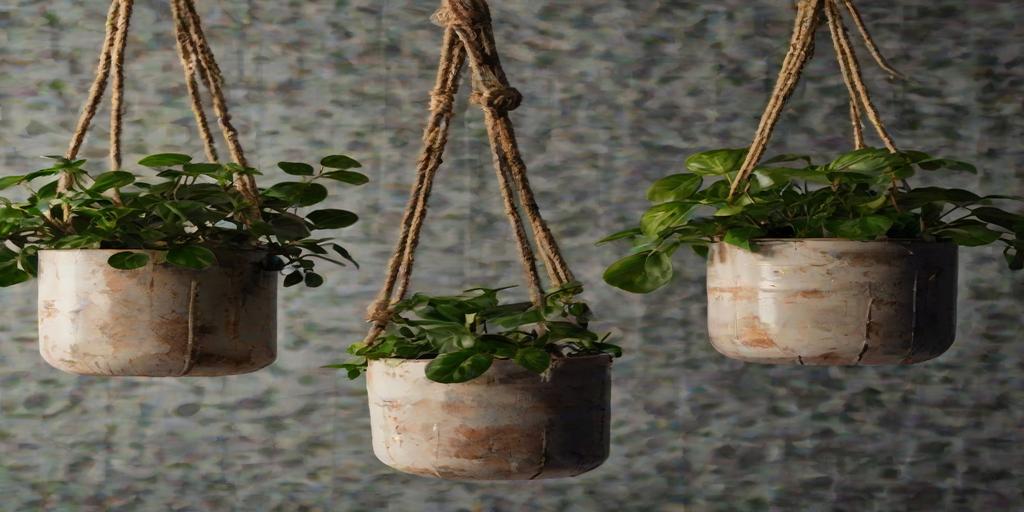
DIY Guide: How to Make Hanging Planters for Low Light Plants
Learn how to craft beautiful hanging planters perfect for low-light plants! This step-by-step DIY guide covers materials, design ideas, and care tips to bring greenery into any dim space.
Introduction
Did you know that low-light plants can thrive even in the darkest corners of your home? Whether you live in an apartment with limited sunlight or just want to add greenery to a dim hallway, hanging planters are a stylish and space-saving solution! In this guide, we’ll walk you through everything you need to create your own DIY hanging planters—from choosing the right materials to picking the best low-light plants. Let’s get crafting!
Benefits of Hanging Planters for Low Light Plants
Hanging planters are a fantastic way to maximize vertical space, making them ideal for small homes or apartments where floor space is limited. They allow you to bring greenery into your space without cluttering surfaces.
Another great benefit is that they enhance air quality while adding a natural aesthetic to any room. Low-light plants are especially well-suited for hanging planters because they don’t need direct sunlight to thrive.
Since hanging planters are easy to move and rearrange, you can adjust their position to ensure your plants get the best possible light exposure—even in dimmer spaces.
Best Low Light Plants for Hanging Planters
If you’re looking for the perfect plants for your hanging setup, here are some top choices:
-
Pothos – Hardy and fast-growing, this trailing plant is nearly impossible to kill.
-
Spider Plant – Thrives in indirect light and produces adorable baby offshoots.
-
Philodendron – Adaptable and low-maintenance, with beautiful heart-shaped leaves.
-
ZZ Plant – Drought-tolerant and perfect for beginners who might forget to water.
-
Ferns (e.g., Boston Fern) – Loves humidity and shade, making it great for bathrooms.
Materials Needed for DIY Hanging Planters
Creating your own hanging planter is simple with the right supplies:
-
Hanging materials: Macramé hangers, rope, or chains
-
Containers: Ceramic pots, mason jars, or even recycled containers
-
Tools: Scissors, a drill (for drainage holes), and hooks for mounting
-
Soil: Potting mix suitable for low-light plants
-
Optional extras: Decorative beads, paint, or waterproof sealant for a personalized touch
Step-by-Step Guide to Making Hanging Planters
Ready to craft your own hanging planter? Follow these steps:
-
Choose your planter style – Decide between macramé, geometric, or upcycled designs.
-
Prepare the container – If needed, drill drainage holes to prevent root rot.
-
Secure the hanger – Use knots, hooks, or chains to ensure it hangs safely.
-
Plant your greenery – Add soil and your chosen low-light plant.
-
Hang and adjust – Position it at the right height for optimal light exposure.
Creative Design Ideas for Hanging Planters
Want to make your hanging planters stand out? Try these stylish ideas:
-
Boho macramé hangers – Perfect for a cozy, relaxed vibe.
-
Minimalist geometric planters – Great for modern, sleek interiors.
-
Tiered hanging systems – Ideal for displaying multiple plants at different levels.
-
Upcycled containers – Use teacups, tin cans, or glass jars for a unique, eco-friendly look.
Care Tips for Low Light Plants in Hanging Planters
Keeping your hanging plants healthy is easy with these simple tips:
-
Water sparingly – Overwatering is a common issue, so let the soil dry slightly between waterings.
-
Rotate occasionally – This ensures even growth since one side might get more light.
-
Wipe leaves – Dust can block light absorption, so gently clean them.
-
Fertilize lightly – A small amount during growing seasons helps maintain vitality.
Conclusion
Now that you know how to make your own hanging planters for low-light plants, it’s time to get creative! Whether you prefer boho macramé or sleek modern designs, these DIY planters will brighten up any dim corner. Share your creations with us, and happy planting!
